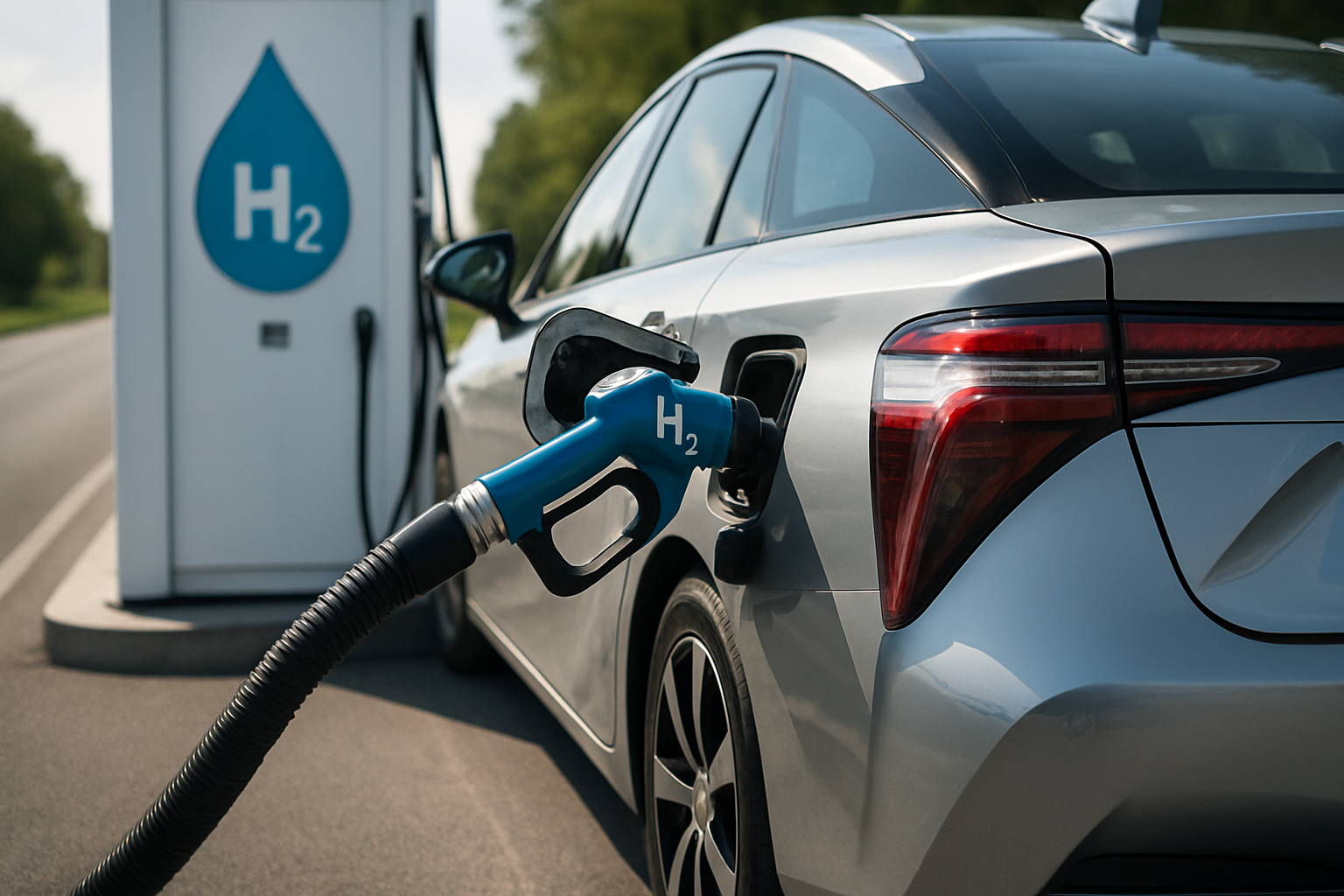Hydrogen Fuel Cell Vehicles: The Quiet Revolution in Automotive Sustainability
In the ever-evolving landscape of automotive technology, hydrogen fuel cell vehicles (FCVs) are emerging as a promising solution to the challenges of sustainable transportation. This innovative propulsion system, which converts hydrogen into electricity, offers a unique blend of zero-emission driving and long-range capability that could reshape the future of personal mobility.

The Science Behind Hydrogen Fuel Cells
At the heart of every FCV is the fuel cell stack, a remarkable piece of engineering that converts hydrogen into electricity through an electrochemical process. This stack consists of multiple fuel cells, each containing an anode, cathode, and electrolyte membrane. When hydrogen is fed into the anode, it splits into protons and electrons. The protons pass through the membrane to the cathode, while the electrons are forced through an external circuit, generating electricity to power the vehicle’s electric motor.
Oxygen from the air enters the cathode, where it combines with the protons and electrons to form water – the only emission from this process. This elegant chemical reaction not only produces the energy needed to propel the vehicle but also results in a completely clean exhaust, making FCVs a true zero-emission solution.
The Advantages of Hydrogen Fuel Cell Vehicles
One of the most significant advantages of FCVs is their quick refueling time. While battery-electric vehicles can take hours to charge fully, hydrogen vehicles can be refueled in a matter of minutes, much like traditional gasoline-powered cars. This feature makes FCVs particularly attractive for long-distance travel and commercial applications where downtime is costly.
FCVs also offer impressive range capabilities, often exceeding 300 miles on a single tank of hydrogen. This long-range performance addresses one of the primary concerns associated with battery-electric vehicles – range anxiety. For drivers who frequently undertake long journeys or those who don’t have access to home charging, FCVs present a compelling alternative.
Moreover, hydrogen fuel cells don’t suffer from the same degradation issues as lithium-ion batteries. While battery performance can degrade over time, affecting range and charging capacity, fuel cells maintain their efficiency throughout the vehicle’s lifespan, ensuring consistent performance.
Infrastructure Challenges and Solutions
Despite the numerous advantages of FCVs, the lack of hydrogen refueling infrastructure remains a significant hurdle to widespread adoption. As of 2023, there are only a handful of hydrogen fueling stations in most countries, primarily concentrated in urban areas and along major highways.
However, governments and private companies are increasingly investing in hydrogen infrastructure. In Germany, for example, a joint venture called H2 Mobility is rapidly expanding the country’s network of hydrogen stations. Similar initiatives are underway in Japan, South Korea, and parts of the United States, particularly California.
The development of this infrastructure is crucial not just for passenger vehicles but also for the decarbonization of heavy-duty transport. Hydrogen fuel cells are particularly well-suited for long-haul trucks, buses, and other commercial vehicles where battery weight and charging times can be prohibitive.
The Environmental Impact of Hydrogen Production
While FCVs themselves produce zero emissions, the environmental impact of hydrogen production is a critical consideration. Currently, most hydrogen is produced through steam methane reforming, a process that uses natural gas and releases carbon dioxide as a byproduct.
However, the future of hydrogen production lies in green hydrogen – hydrogen produced through electrolysis powered by renewable energy sources like wind and solar. As the cost of renewable energy continues to fall and electrolysis technology improves, green hydrogen is becoming increasingly viable. This shift towards sustainable hydrogen production will be crucial in realizing the full environmental benefits of FCVs.
The Role of FCVs in a Multi-Technology Future
As we look towards a sustainable automotive future, it’s becoming clear that no single technology will dominate. Instead, we’re likely to see a mix of propulsion systems tailored to different use cases and regional conditions. FCVs are poised to play a significant role in this diverse ecosystem, particularly in applications where long range, quick refueling, and zero emissions are paramount.
For instance, hydrogen fuel cells could be ideal for long-haul trucking, where the weight of batteries would significantly reduce payload capacity. In regions with abundant renewable energy resources, FCVs could serve as an efficient way to store and utilize excess green energy, effectively acting as mobile power plants.
The Road Ahead for Hydrogen Fuel Cell Vehicles
While challenges remain, the potential of hydrogen fuel cell technology is undeniable. As infrastructure expands and production costs decrease, we can expect to see more FCVs on our roads. Major automakers like Toyota, Honda, and Hyundai are already offering FCVs in select markets, with others planning to enter the space.
The journey towards widespread adoption of FCVs is as much about overcoming technical hurdles as it is about shifting perceptions and building awareness. As consumers become more familiar with the technology and its benefits, and as governments continue to support clean energy initiatives, hydrogen fuel cell vehicles could play a crucial role in our transition to a sustainable transportation future.
In conclusion, hydrogen fuel cell vehicles represent a fascinating frontier in automotive technology. By offering zero-emission driving without compromising on range or refueling convenience, FCVs have the potential to revolutionize our approach to sustainable mobility. As we continue to innovate and overcome challenges, these vehicles may well become a common sight on our roads, silently powering us towards a cleaner, greener future.





